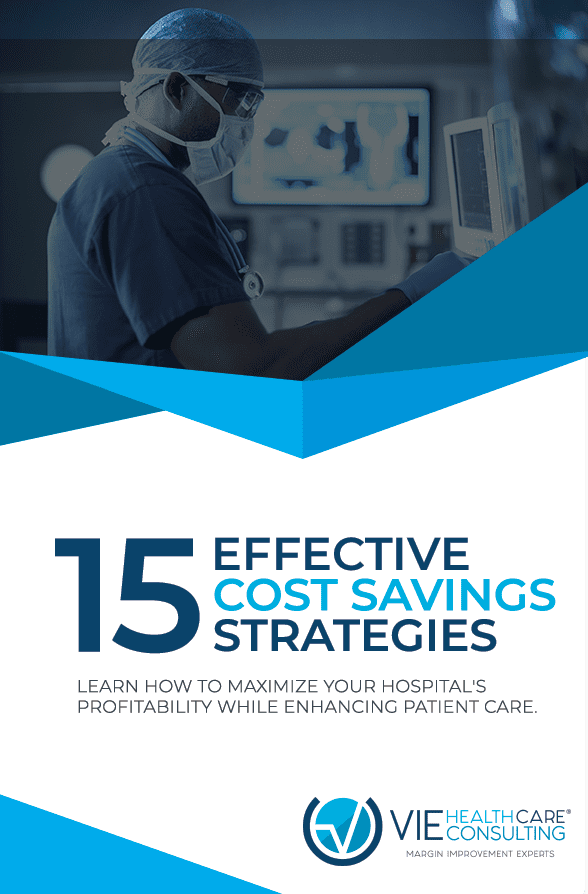Using Data Analysis with Physicians
This article was written by Lisa Miller.
Our third and final blog on Physician Preference Items (PPIs) focuses on why data analysis is the key to cost savings.
Our first blog explored best practices to identify and realize cost savings, followed by a focus on the importance of price transparency in our second.
Background
Hospital costs are affected by a number of factors, which include the following:
- The US population is aging, and chronic conditions and functional impairments are increasing. “The Medicare population is projected to increase from 54 million beneficiaries today to over 80 million beneficiaries by 2030 as the baby-boom generation ages into Medicare.” [1]
- Cardiac, orthopedic, and spine procedures which utilize medical devices and implants are on the rise.
- The implants used in these procedures are known as Physician Preference Items (PPIs) because they are selected by individual providers for their patients.
- PPIs comprise up to 60% of a hospital’s total supply costs.
- PPI selection involves multiple stakeholders within the healthcare system, including clinical and financial leadership, as clinical outcomes and cost of care are evaluated.
Economic reform and reimbursement models have transformed the healthcare landscape, as the US has transitioned to value based care. While providers place the wellbeing of their patients first, they also have a responsibility to provide the best value for both their patients and their organization. [3]
It is vital that all stakeholders utilize best practices to procure PPIs to provide high quality clinical outcomes at the best price.
A team approach, with integrated clinical and financial leadership, is therefore optimum for cost containment.
At VIE Healthcare® Consulting, we have outlined our reasons for this, and the benefits, below.
Vendor relationships: Providers have historically chosen PPIs based on factors including clinical outcomes, advances in technology, and vendor relationships. For example, the sales representative for medical device vendor provides “added value” to surgeons (such as enhanced service, clinical education, a link to the pipeline of new technologies, and accompanying the surgeon in the OR as they utilize new products). This enables a relationship of trust to be built with the vendor. [4] This vendor relationship is important to achieve cost savings. If physicians are included in all decision making, it can also prove invaluable in vendor contract negotiations.
Cost control: As hospitals adopt an integrated team approach to the management of PPIs, the relationship between the supply chain and providers becomes paramount in controlling costs. “The US implantable device market is expected to exceed more than $31 billion by 2024.” [2] New technologies, vendor variance and constant construct changes make PPIs difficult to manage for many hospitals, however. The “best practice” in PPI management is to utilize continual data analysis to obtain true financial metrics, margin and cost awareness, reimbursement consequences and contract compliance.
Effective PPI management utilizes continual data analysis to obtain true financial metrics, margin and cost awareness. Click To Tweet
Developing trust: As the collaborative financial/clinical team is assembled, a trust and respect relationship needs to be developed with all stakeholder input. This is essential to set the stage for success. The data analysis can then begin.
Data analysis of PPIs to achieve cost savings
A comprehensive data analysis should include the following steps:
- A review of PPI utilization and high cost drivers using hospital metrics should initially be shared with the team to decide which specialty area will be addressed first.
- We recommend utilizing a third party healthcare consultant to carry out the initial and ongoing data analysis, comparing current pricing to regional and national benchmarks. Investing in benchmarking will proactively avoid any unnecessary high costs in the future.
- Data should be shared with the team in a clear dashboard format and discussions relating to new technologies and clinical outcomes led by clinical experts. Cost analysis and clinical outcomes go hand-in-hand, therefore, all stakeholders must be part of the decision process in order to achieve sustainable cost savings.
- Data analysis is not a one time task. A deep dive into PPI cost per procedure, reimbursement, possible standardization, and vendor variability are all areas that should be addressed.
- Expert knowledge of vendor pricing and costing models utilized by other healthcare facilities is imperative and can be supplied by your specialist healthcare consultant. Nuances in implant constructs, “carve out” pricing and continuous new technologies make the ‘’like-for-like’’ price comparisons difficult to decipher.
A healthcare consultant with successful PPI cost savings strategies and data analytics capabilities will achieve the best results.
The benefits of data analysis

As part of the collaborative team, physicians are data driven and analytical by nature. Including them in the decision making process will ensure they respond positively to evidence based data presented to them.
Furthermore, their vendor relationships will help to negotiate best contract terms and pricing, enabling a consensus to be reached based on quality outcomes and best value for the patient and the organization.
Once again, it is important to include your healthcare consultant as part of the contract negotiation team in order to obtain optimal pricing and terms for your organization.
Conclusion: The importance of frequent reviews
Data analysis does not end once the contract is signed.
From experience, we know that contract compliance issues and invoice errors occur on a regular basis. The most effective practice is to perform data analysis and pricing adherence on a quarterly basis. Part of this “best practice” involves monitoring success, tracking cost savings and sharing outcomes with the collaborative team. Integrated leadership is a vital part of a successful economic strategy.
Regularly demonstrating success in cost savings reinforces the positive financial health of your organization in an era of value based care.
References
[1] http://www.medpac.gov/docs/default-source/reports/chapter-2-the-next-generation-of-medicare-beneficiaries-june-2015-report-.pdf
[2] https://scientya.com/physician-preference-items-data-analysis-is-the-key-to-cost-savings-a5f0358feb08
[3] American Academy of Orthopedic Surgeons- Position Statement on Value Driven Use of Orthopedic Implants https://aaos.org/contentassets/1cd7f41417ec4dd4b5c4c48532183b96/1104-value-driven-use-of-orthopaedic-implants1.pdf
[4] Burns LR, Housman MG, Booth RE, and Koenig AM, Physician Preference items, what factors matter to surgeons? Does the vendor matter? Medical Devices: Evidence and Research 2018: 11 39-49. DOI: 10.2147/MDER.S151647.
[5] VIE Healthcare: Physician Cost Awareness Report



